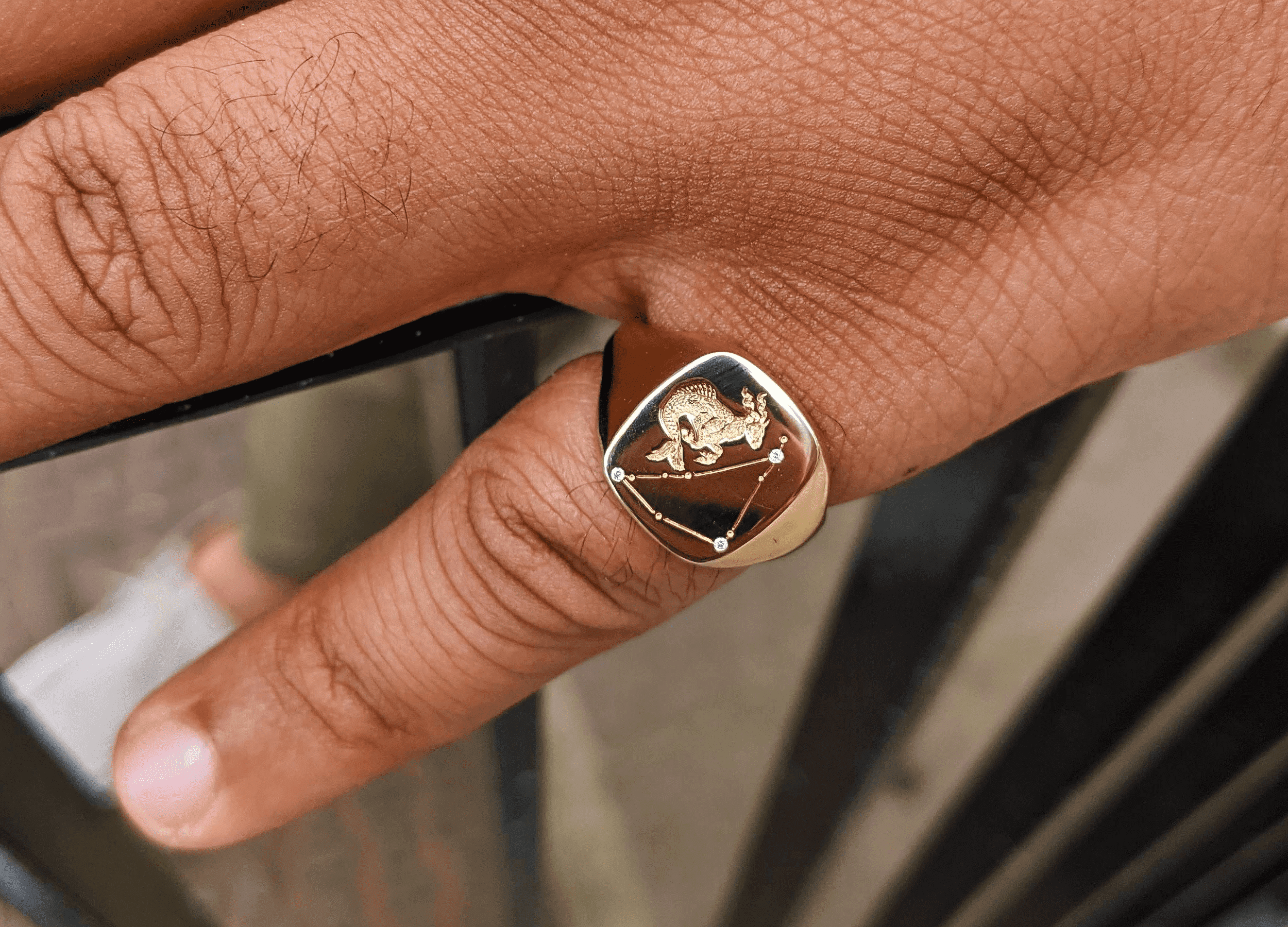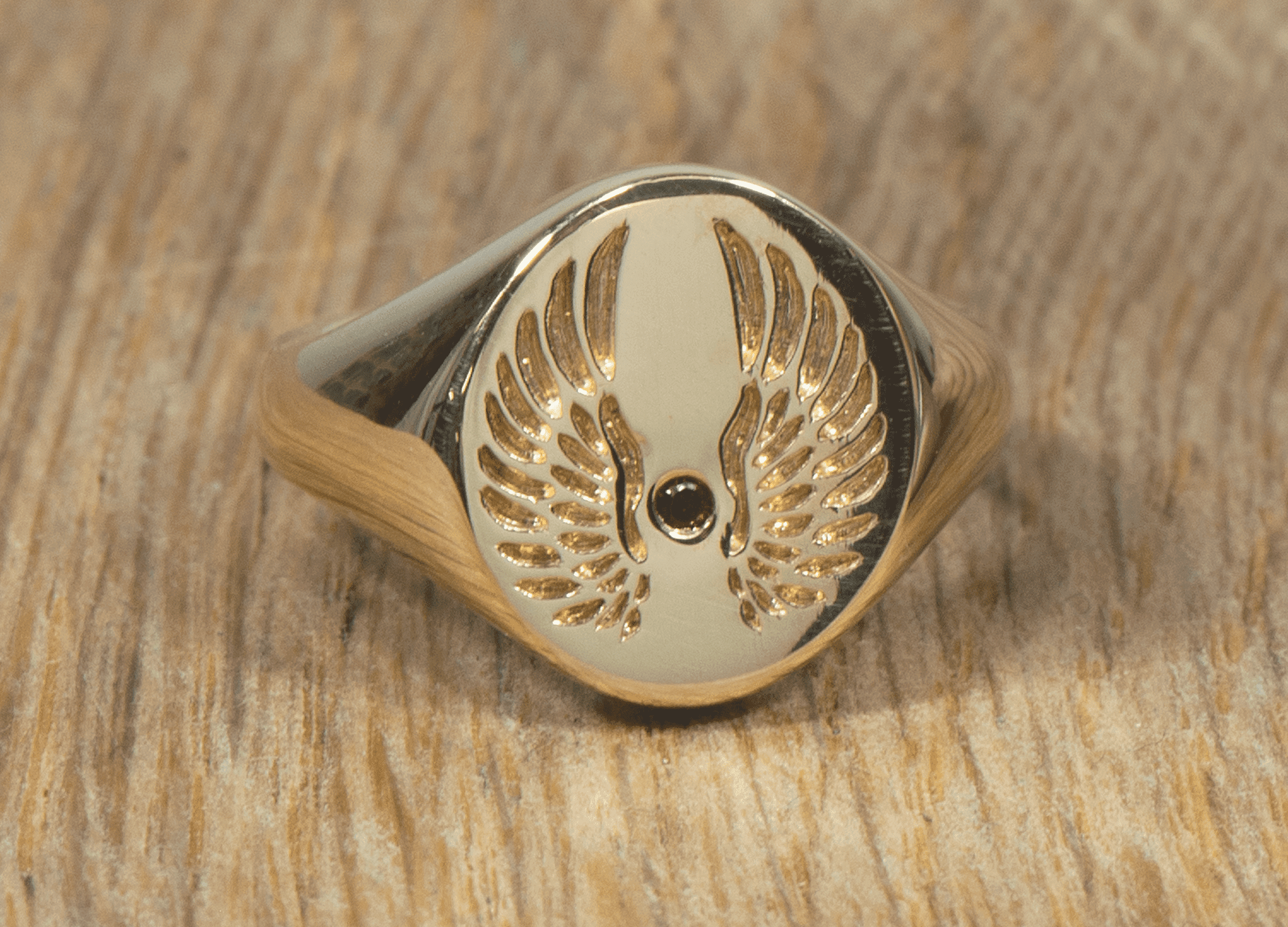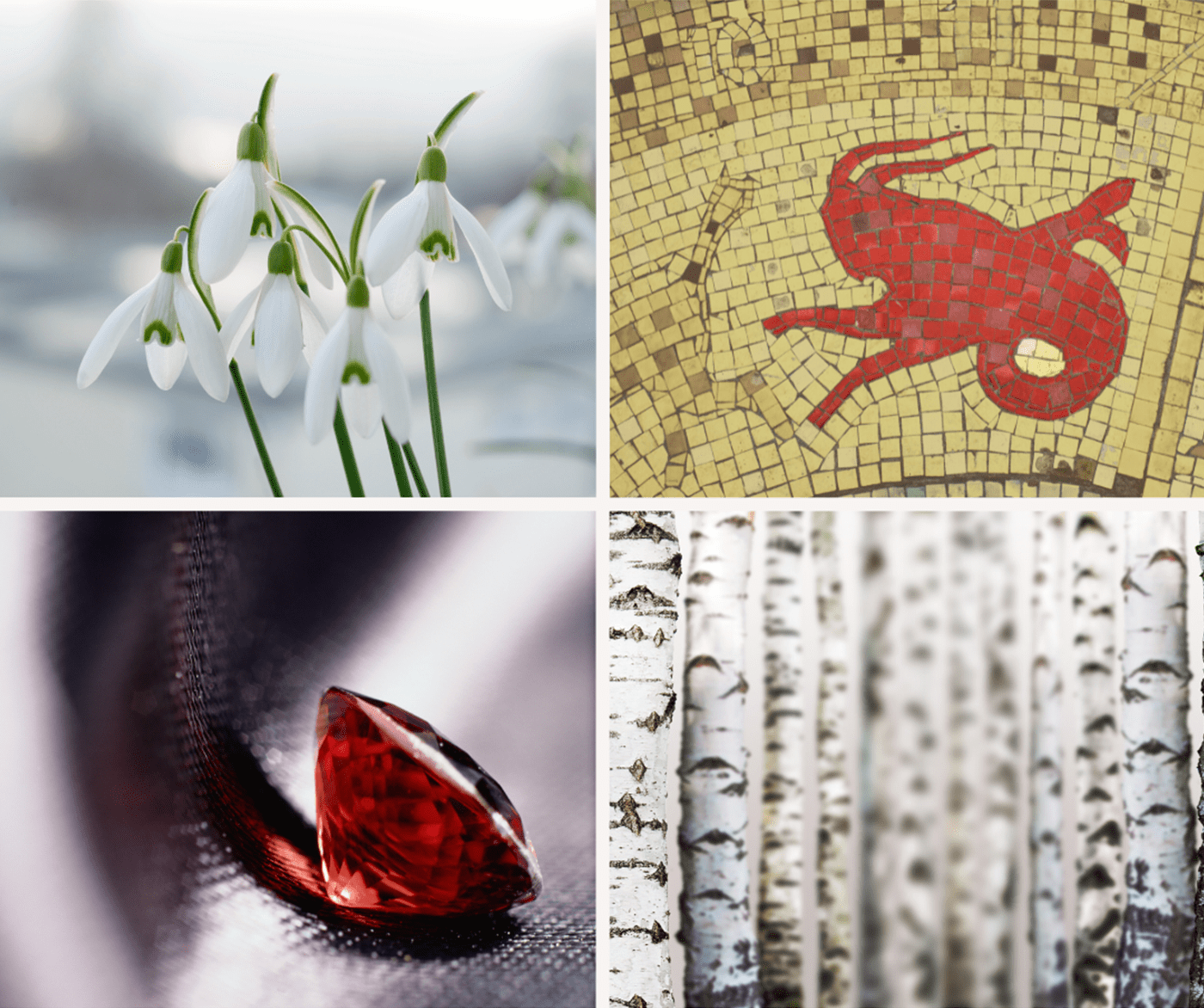Whether you practice Western astrology, or find yourself more of a sceptic, there is no denying that the symbolic language of the Zodiac makes for interesting reading. Here at Rebus, we love to explore the rich histories and symbolism behind this mysterious world, and often these symbols find their way onto personalised signet rings worn by our clients.
Come with us as we explore the birthstones, birth flowers, and birth trees, behind the twelve signs of the Zodiac, uncovering ancient meanings that originate from Roman, Greek, Egyptian, and even Druid folklore.
We begin this series, with those celebrating their birthday in January, assigned to either Capricorn (born December 22 to January 19) or Aquarius (born January 20 to February 18).


Birthstone: Garnet
January’s birthstone is derived from the Latin word granatus or seed, because the vibrant, red gemstones are likened to the heart of a pomegranate. Known as commitment stones, garnet symbolises eternal friendship, love, and constancy - most likely because red evokes love in all its forms. In fact, Victorians believed garnet had power to bring back lost loves and heal heartbreak.
Further back, both the Ancient Egyptians and Romans believed garnet to hold talismanic properties, representing prosperity and good fortune. Pharaoh tombs dating as far back as 3100 BC were found to house garnet artefacts, and 3rd century Roman soldiers used the stone as protection when going into battle.
The idea of garnet as protector was adopted across the world: Native American healers believed it could ward off poison and injury, Hindu traditions that it guarded against everything from depression to plague, Persian soldiers used it as protection from lightning strikes, and until the Middle Ages it was still worn around the neck as a remedy for those suffering from sore throats.


Birth Flower: Carnation / Snowdrop
Two birth flowers - the carnation, and the snowdrop - represent January.
The carnation, known as dianthus or divine flower, is native to Greece. Some believe its name derives from the Greek words for Zeus and flower, which translate as dios and anthos. Others suggest the name originates from the myth of Diana, goddess of the hunt. She blamed a failed hunt on the lute-playing of a nearby shepherd and plucked his eyes out in rage; they fell to the ground and grew into red carnations. Whatever the etymology, these ‘flowers of the gods’, come in a number of colours each with different meanings. Pink carnations are a symbol of gratitude and affection, and are the official flower of Mother’s Day, while red represents true love, and white is seen as symbolic of purity and luck.
The snowdrop, or galanthus nivalis, means milk flower of the snow. As the first flower to bloom at the end of a harsh winter, the snowdrop represents hope and beauty. Traditionally associated with sympathy and mourning, these flowers are also symbolic of innocence and purity thanks to their white colour, and are gifted to newborns.
Birth Tree: Birch / Rowan
Celtic Druids were deeply connected to both the natural and spirtual world, and practiced tree astrology. Two trees - the birch (December 24 to January 21) and the rowan (January 22 to February 18) - were assigned to those born in January.
The birch is incredibly resilient, thriving in cold landscapes and being the first tree to regrow leaves in spring. It is no surprise that this pioneer species are a symbol of new beginnings and rebirth. Like their birth tree, those born in January are seen as tough and motivated individuals, who lead with brightness and charm.
From ancient times, the rowan tree has been seen as protector, placed over the threshold of homes to ward off evil spirits. The tree is a symbol of success and power, with their red berries thought to be the food of the gods. Those associated with the rowan are therefore regarded as influential visionaries, who bring a unique, creative energy.
Interested in designing a piece with your own birth symbols? Please email info@rebussignetrings.co.uk or book an appointment at our Hatton Garden workshop or via Zoom to find out more.

